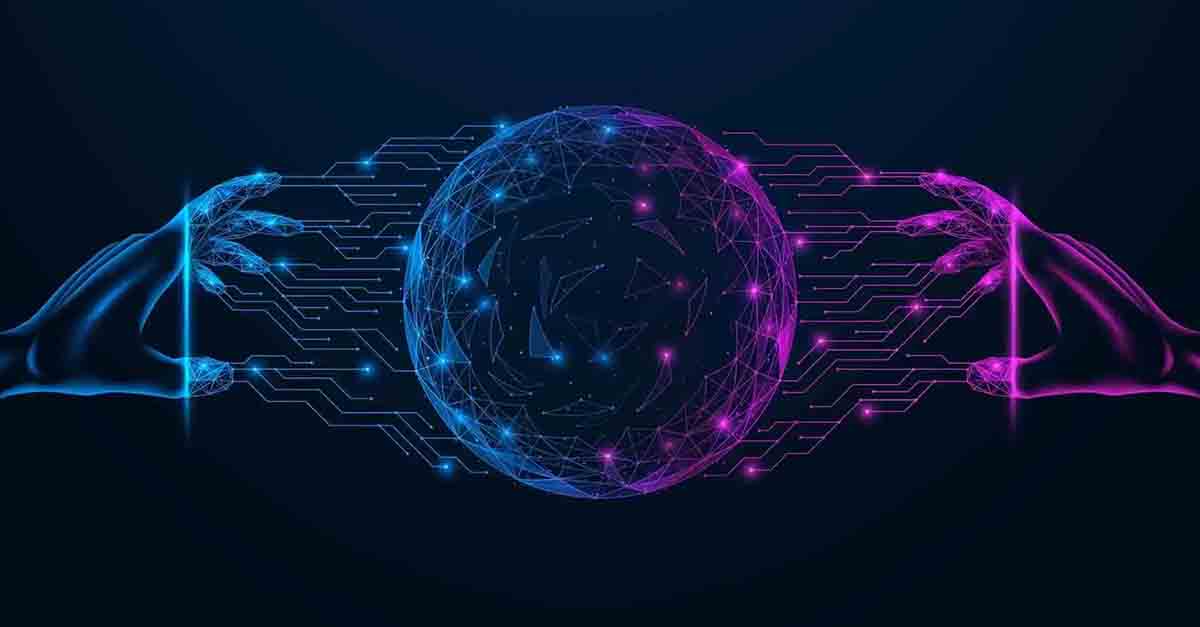
The Hidden Risks of Delaying Data Digitization
Starting digital transformation initiatives is often a sticking point for many businesses because of the perceived effort and cost of such projects. ...
Solutions
Solutions
Workplace Management Solutions
Real Estate Management Solutions
Maintenance Management Solutions
Energy Management Solutions
Engineering Document Management Solutions
Asset Management Solutions
Automate campus scheduling for classes, meetings, and exams with our EMS software.
Plan and manage conferences effortlessly with EMS software to impress guests and streamline operations.
Boost workplace flexibility and maximize space use with seamless desk and room booking.
Organize workplace or campus events smoothly, creating memorable experiences.
Optimize workspace, manage allocations efficiently, and reduce costs with our space management solutions.
Deliver projects on time and within budget by improving communication, collaboration, and efficiency with our software.
Streamline lease accounting for ASC 842, IFRS, and GASB compliance.
Manage leases efficiently by tracking key dates, analyzing costs, and ensuring compliance.
Centralize data and analytics for better insights, faster negotiations, and revenue growth.
Centralize facility and asset maintenance, automate work orders, and ensure compliance with our CMMS software.
Extend asset life, reduce downtime, and prevent costly repairs with data-driven monitoring.
Prevent equipment failures and extend asset life by detecting and addressing issues early.
Make sustainable, cost-efficient energy decisions by monitoring and optimizing power consumption.
Remotely monitor and control equipment with real-time data to predict issues, boost efficiency, and reduce downtime.
Easily share and collaborate on documents, creating a single source of truth for engineers and contractors.
Manage and analyze assets across their lifecycle to schedule maintenance, reduce downtime, and extend lifespan.
Improve visibility, automate work orders, and ensure compliance for efficient facility and asset management.
Resources
Browse our full library of resources all in one place, including webinars, whitepapers, podcast episodes, and more.
Support
Looking for access to technical support, best practices, helpful videos, or training tools? You’ve come to the right place.
About Accruent
Get the latest information on Accruent, our solutions, events, and the company at large.

Discover the evolving challenges of knowledge management in a post-pandemic world. Understand the impact of remote work, the rise of decentralized data storage, and the necessity for efficient and secure knowledge management practices. Learn how organizations can adapt by centralizing key information, improving accessibility, and maintaining operational efficiency in a flexible work environment.
Table of contents
The onset of the global pandemic in early 2020 triggered many waves of challenges for organizations and the community at large. As well as the obvious potential health threat, it threw working life as we knew it into disarray, leaving businesses scrambling to facilitate new and untested working arrangements.
It also exposed some glaring productivity issues with corporate information systems and knowledge management processes. These issues had always been there, but were exacerbated by the immediate, and subsequent ongoing need for large numbers of the workforce to be able to access corporate systems remotely.
This article outlines several of those issues through the lens of knowledge management and their implications for owners and operators of critical infrastructure assets, as we collectively traverse this post-pandemic world.
One of the challenges organizations faced as COVID-19 first took hold, was equipping many, if not all staff to work remotely, and providing them with access to core information systems. Some companies were better prepared for this than others - but it’s evident that IT teams everywhere had a particularly tough 2020.
Pre-pandemic, we saw that about half of RedEye’s customers across the mining, power, water, gas, and other critical infrastructure sectors, kept all of their core business systems behind a firewall.
This posed a common problem: their employees needed to be on their network to access core systems. However, the network could only be accessed from the office, because not everyone in the organization had a laptop and VPN. In fact, for some of our larger customers, the IT team was the only staff who could access the corporate network from home. This was problematic for the thousands of other employees who could not.
Many of our customers found that the only system their offsite and contractor teams could readily access in the early days of the pandemic, was RedEye. This at least meant that work on critical infrastructure assets could continue, as key engineering drawings and related documents were stored in one central location that was accessible via mobile devices and from beyond the firewall.
Companies that relied on paper-based business processes found it challenging to maintain normal operations during the restrictive lockdowns. So too did organizations that put what they thought would be temporary security measures in place to allow remote access. Many “solutions” were cobbled together as quick fixes and remain in place today.
Other organizations, like El Paso Electric, have since taken the opportunity to begin digitization projects to centralize key asset information, and make it available via secure mobile apps. This will better equip them for future uncertainty - and help them to maintain operational efficiency in even the most unpredictable conditions.
The onset of the pandemic also drove a substantial increase in the use of online communications platforms like Zoom, Microsoft Teams, and Slack.
While these can be effective communication tools when face-to-face communication is not an option, they seem to have become de facto storage systems for documents, files, and other critical business information. It now means there’s yet more systems through which we need to trawl for what may be important operational documents.
We’ve seen this happen at RedEye, and we see it among our customers too.
Our account managers who’ve worked onsite in mines for example, report that field crew and contractors now use up to 400 different apps outside of a company’s corporate systems, simply to get their job done. It’s clear that if employees can’t easily access their company’s official systems to get the information they need, they’ll use public-facing applications instead.
The data security risks here should be just as concerning for owners and operators of critical infrastructure, as the safety risks. If field crew don’t have or can’t access the right information or are not confident they’re working on the latest version of an engineering drawing, for example, they may be putting their safety at risk.
Beyond these risks, it is also operationally inefficient to have corporate information stored in multiple locations, on personal and network drives, in employees' inboxes and Teams conversations, and whatever other data silos may exist. The storage of corporate knowledge in a haphazard, unstructured way has always been problematic, but the pandemic compounded the issue by forcing the creation of a more decentralized workforce. There have never been more systems, tools, and apps in which corporate knowledge can be stored.
The decision for organizations about whether to store key corporate information behind a firewall, on a SaaS platform or across multiple systems is not new, but it’s one that will dictate the extent to which they can scale and remain flexible, while keeping their corporate information secure.
Oil and gas producer WestSide is one organization that has embraced the SaaS model, providing its internal and contractor teams with access to RedEye. This means all key stakeholders can access the most current version of each drawing or document from wherever in the world they are. Westside is reporting substantial productivity improvements and cost savings, but critically, the organization has created a single source of truth for its engineering drawings and related information.
Since the pandemic began, businesses globally have really had to consider how they democratize data and ensure that those who need access to the most up-to-date corporate information have it, where and when it is required. This will be the subject of an entire future article. Suffice to say, the theme of data democratization is one that will require the custodians of corporate knowledge to find the delicate balance between accessibility, efficiency, and security.
The rapid decentralization of the workforce and the need to accommodate people working from home created other challenges for employers in 2020.
For many employees, the last three years brought about a major change in their attitude about work. It provided people with a rare opportunity to spend more time at home with loved ones, eliminate a daily commute and time to consider the bigger picture of their life. As employees became used to working remotely, so too did their expectation that flexible working arrangements would continue.
Not only has this placed ongoing strain on corporate systems and knowledge management processes as previously outlined, but it has also created a more transient and transactional workforce.
Businesses are now contending with two fundamental HR issues - The Great Resignation and the Quiet Quitting phenomenon.
Robin Boomer, Director of Advisory at Gartner, said in an HRM article, “People are recalibrating what’s important to them, and placing less priority on their work in relation to other things that are important in their life, such as their family, their geographical location, their avocations, and the part of the country or the world that they want to live in.”
Like many of our customers, we have also had challenges with encouraging existing employees back to the office, accommodating requests for people to work remotely from interstate or overseas, and finding and retaining suitably specialized staff.
I was able to approve drawings sitting in an airport in New Zealand, going through the important engineering changes that had to be approved to allow the projects to proceed”
-Rob Trout, Digital Transformation Leader, WestSide
These new HR challenges combined with the ways in which remote working has changed the dynamics of the workforce, all point to the reality that organizations need to build in more resilience. Leaders need to recognize that it is their responsibility to make sure that their business remains resilient in the event that people leave.
So many businesses focus on staff acquisition and retention - but neglect to manage their corporate knowledge in a way that reflects its inherent value.
Resilience can be achieved with a stronger focus on systematizing corporate knowledge and related business processes. Perhaps not ironically, the easier companies make it for their employees to access and find the information they need to do their jobs efficiently, the more likely they are to stay.
Starting digital transformation initiatives is often a sticking point for many businesses because of the perceived effort and cost of such projects. ...
In this article, we will explore engineering drawing and document management in these sectors, breaking down the best practices, challenges, and ...
Delve into why water utilities must share information for collaborative success and the challenges they face in doing so.
Subscribe to stay up to date with our latest news, resources and best practices